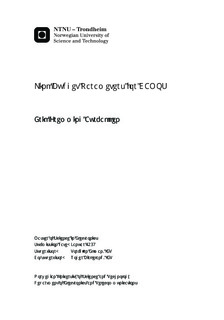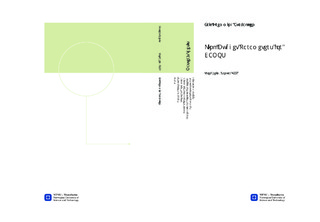| dc.description.abstract | In the CAMOS project, a node network with sensors is proposed for research and monitoring in the Arctic zone. Today, there are large limitations for communication in the area. Different satellite systems do exist, but none are found to be suitable for the sensor network. A part of the CAMOS project is a new satellite communications system, customized for this use. This study concerns this satellite system, which has a primary area of target between Greenland to the west and Novaya Zemlya to the east. The latitudes of interest are 70N and north to the North Pole.
Two types of orbits within LEO, a polar orbit with an elevation angle of 90 degrees and a sunsynchronous orbit (SSO) with an elevation angle of 98 degrees, have been compared with respect to coverage, connection time and revisit time. For the satellites used in the simulations, two different antennas were customized to fit hard cut-off Earth station elevation angles of 20 and 30 degrees. Simulations in STK showed that a satellite in polar orbit had more passes with connection per day than in SSO at latitudes of 80 degrees N and north, while a satellite in SSO had more at 72 degrees N and 76 degrees N. Up to eight more passes with connection were obtained using an elevation angle of 20 degrees, than with 30 degrees. While the polar orbit had connection with at least eight sensors for every pass, SSO had five consecutive passes without any connection for an elevation angle of 30 degrees. A 20 degrees elevation angle gave longer connection times than 30 degrees, with most frequent time difference within the interval of 100 to 110 seconds.
A link budget has also been estimated for the two different antennas with three different data rates; 0.5, 1.0 and 1.5 kbit/s. The radiation patterns of the antennas were theoretical, and assumptions and other work have been used for parameters that could not be calculated. A link margin of 5 dB was required for the system. With a transmitted power from the transmitting antenna of 50 mW, only a data rate of 0.5 kbit/s and an antenna designed for 30 degrees elevation angle met this requirement at the elevation angle limit, with 6.3 dB. An increase of the data rate from 0.5 kbit/s to 1.0 kbit/s resulted in a 3 dB decrease of the link margin, while an increase from 1.0 kbit/s to 1.5 kbit/s gave an additional decrease of 1.8 dB. The link margin cost of using an antenna customized for 20 degrees compared to 30 degrees was found to be 4.4 dB at the lowest elevation angle limits. | |

